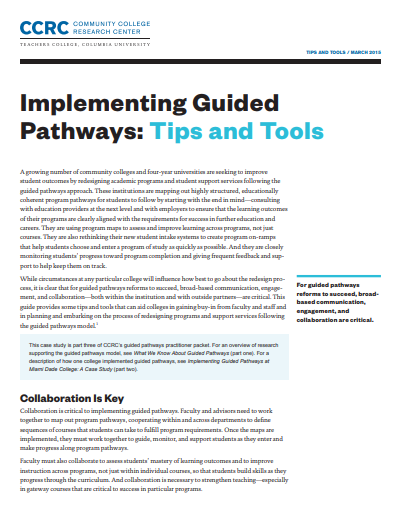This tool from the Community College Research Center (CCRC) outlines the implementation process, costs and benefits of redesigning academic programs and student support services following the guided pathways approach. Guided pathways is a model that aims to structure postsecondary programs in such a way that students are supported along their education path and meet requirements for success in education and careers.
The report puts forth a five-year framework to implement guided pathways reforms and provides recommendations for encouraging collaboration among faculty and staff, as well as generating financial investment from colleges. During this five-year implementation and planning process, benefits from the reforms are often not seen until year three of five. A CCRC analysis found that guided pathway reforms were likely to improve college efficiency by reducing the cost of student completion but would increase the cost per student enrolled.The report further makes the case that guided pathways reforms are worth the cost because of their ability to increase rates of student success, position colleges to receive performance-based funding, improve student recruitment and retention rates for colleges, and address financial aid restriction concerns by ensuring that students complete their programs in a timely fashion.
CCRC’s Implementing Guided Pathways: Tips and Tools is a go-to resource for state and local policymakers to learn how to implement the guided pathways approach to postsecondary program design.







